-
 bitcoin
bitcoin $114320.977035 USD
-0.40% -
 ethereum
ethereum $4152.439985 USD
-1.75% -
 tether
tether $1.000111 USD
-0.04% -
 xrp
xrp $2.843037 USD
-1.63% -
 bnb
bnb $1013.349380 USD
-1.62% -
 solana
solana $208.362767 USD
-2.10% -
 usd-coin
usd-coin $0.999783 USD
0.00% -
 dogecoin
dogecoin $0.232559 USD
-1.00% -
 tron
tron $0.333491 USD
-1.09% -
 cardano
cardano $0.806310 USD
0.19% -
 hyperliquid
hyperliquid $45.023720 USD
-1.59% -
 ethena-usde
ethena-usde $1.000819 USD
-0.06% -
 chainlink
chainlink $21.241249 USD
-2.11% -
 avalanche
avalanche $30.035416 USD
-0.66% -
 stellar
stellar $0.364984 USD
-2.05%
How do I cancel an unfilled order in Ethereum contracts?
Unfilled Ethereum-based orders persist until canceled or expired, requiring on-chain transactions or nonce updates to invalidate them via smart contracts.
Sep 28, 2025 at 06:54 am
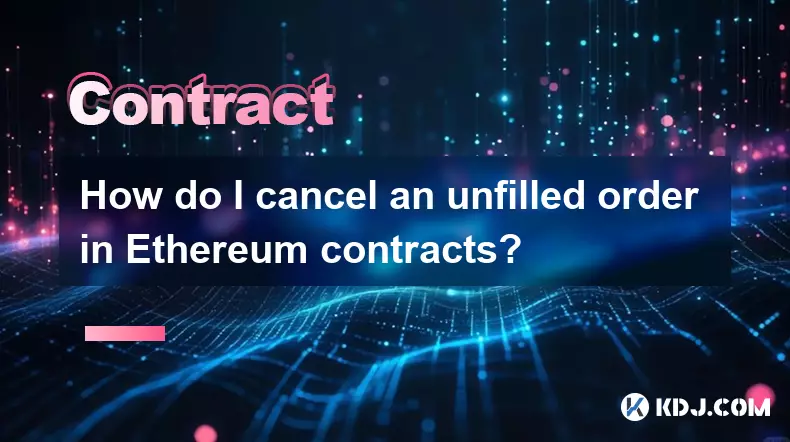
Understanding Unfilled Orders in Ethereum-Based Trading
1. Unfilled orders on Ethereum-based decentralized exchanges often stem from limit orders that do not meet current market conditions. These orders remain open in smart contracts until executed, expired, or canceled by the user. Since blockchain transactions are immutable once confirmed, managing pending orders requires interacting directly with the contract governing the trade.
2. Most decentralized finance (DeFi) platforms utilize smart contracts compliant with standards such as ERC-20 for tokens and custom orderbook logic for trading. When a user places an order, it is typically signed off-chain and then registered either on-chain or in a relayer’s system. The ability to cancel depends on where the order is stored and whether it has been matched.
3. In protocols like 0x or OpenSea (for NFTs), orders exist as cryptographic messages rather than on-chain transactions until filled. This design reduces gas costs but means cancellation must also be communicated through a designated method—usually another signed message or an on-chain transaction invalidating the original order.
4. Users must verify if their wallet interface supports direct cancellation. Some dApps provide a 'Cancel Order' button that triggers the necessary function call within the smart contract. If this option isn’t available, manual intervention via tools like Etherscan or contract interaction interfaces may be required.
Steps to Cancel an Unfilled Order
1. Identify the protocol or exchange where the unfilled order was placed. Different platforms use distinct mechanisms for handling orders. For instance, Uniswap v3 uses concentrated liquidity positions instead of traditional orderbooks, so “orders” here refer to liquidity ranges, which can be withdrawn or adjusted.
2. Access your connected wallet and navigate to the activity or portfolio section of the platform. Locate the specific unfilled order. Many modern dApps display active, pending, and filled orders separately, making it easier to manage them.
3. Click the “Cancel” option if provided. This action usually prompts a transaction that calls a function such as cancelOrder() or invalidateOrder() in the backend contract. Approval may be needed if allowances or signatures are involved.
4. Confirm the transaction in your wallet. Gas fees will apply since canceling an unfilled order often requires writing data to the blockchain, especially when the order was previously committed on-chain.
5. Wait for confirmation on the network. Once mined, the order should no longer appear in the orderbook or matching engine. Check using a block explorer or refresh the dApp interface to confirm removal.
Handling Off-Chain Signed Orders
1. In systems where orders are signed off-chain (e.g., 0x Protocol), cancellation doesn't involve sending the order to the blockchain initially. Instead, users broadcast a cancellation notice through a smart contract function like cancelOrders(), specifying the order’s parameters or nonce.
2. The nonce-based cancellation method allows users to invalidate multiple orders at once by increasing their order counter. Each new order or cancellation increments the user’s nonce, rendering previous orders with lower nonces invalid even if they haven’t been filled.
3. Wallets integrated with these protocols often automate this process. MetaMask, Rainbow, or Rabby might offer built-in tools to view and cancel pending zero-exchange orders without manually crafting transactions.
4. Developers or advanced users can interact directly with the smart contract using Web3 libraries. By calling the appropriate cancellation function with the correct order hash or nonce, they ensure the unfilled order is removed from consideration by the matching engine.
5. It's critical to retain records of canceled order hashes or nonces. Some systems require proof of prior signing during dispute resolution or audit processes, particularly in high-value or institutional DeFi applications.
Common Issues and Workarounds
1. A common problem arises when users assume an order is automatically canceled after closing a tab or disconnecting a wallet. Unless explicitly canceled via transaction, the order remains valid and could execute later if market conditions align.
2. Network congestion may delay cancellation transactions. During high-fee periods, setting a higher gas price ensures timely processing. Tools like EthGasStation or GasNow help estimate optimal fees.
3. Some older or lesser-known DEXs lack intuitive cancellation features. In such cases, users must find the contract address and use read/write functions on Etherscan to invoke the cancellation method manually.
4. Token approval issues can prevent cancellation if the contract requires spending rights to verify identity. Revoking unnecessary token approvals post-cancellation enhances security and avoids potential exploits.
Frequently Asked Questions
Can I cancel an unfilled order without paying gas?No, on-chain cancellations require a transaction, which incurs gas fees. However, some layer-2 solutions or sidechains reduce these costs significantly compared to Ethereum mainnet.
What happens if someone fills my order while I’m canceling it?If the fill transaction confirms before the cancellation, the trade executes. Ethereum processes transactions based on block inclusion order, so timing and gas price influence outcomes.
Do all Ethereum-based exchanges allow order cancellation?Most reputable platforms support cancellation, but mechanisms vary. Automated market makers like Uniswap don’t have traditional orders; instead, liquidity providers adjust positions. Orderbook-based DEXs generally offer explicit cancellation options.
Is there a time limit for unfilled orders?It depends on the protocol. Some orders expire based on timestamps encoded in their structure, while others remain active indefinitely until canceled by the user or invalidated via nonce updates.
Disclaimer:info@kdj.com
The information provided is not trading advice. kdj.com does not assume any responsibility for any investments made based on the information provided in this article. Cryptocurrencies are highly volatile and it is highly recommended that you invest with caution after thorough research!
If you believe that the content used on this website infringes your copyright, please contact us immediately (info@kdj.com) and we will delete it promptly.
- BlockDAG, DOGE, HYPE Sponsorship: Crypto Trends Shaping 2025
- 2025-10-01 00:25:13
- Deutsche Börse and Circle: A StableCoin Adoption Powerhouse in Europe
- 2025-10-01 00:25:13
- BlockDAG's Presale Buzz: Is It the Crypto to Watch in October 2025?
- 2025-10-01 00:30:13
- Bitcoin, Crypto, and IQ: When Genius Meets Digital Gold?
- 2025-10-01 00:30:13
- Stablecoins, American Innovation, and Wallet Tokens: The Next Frontier
- 2025-10-01 00:35:12
- NBU, Coins, and Crypto in Ukraine: A New Yorker's Take
- 2025-10-01 00:45:14
Related knowledge
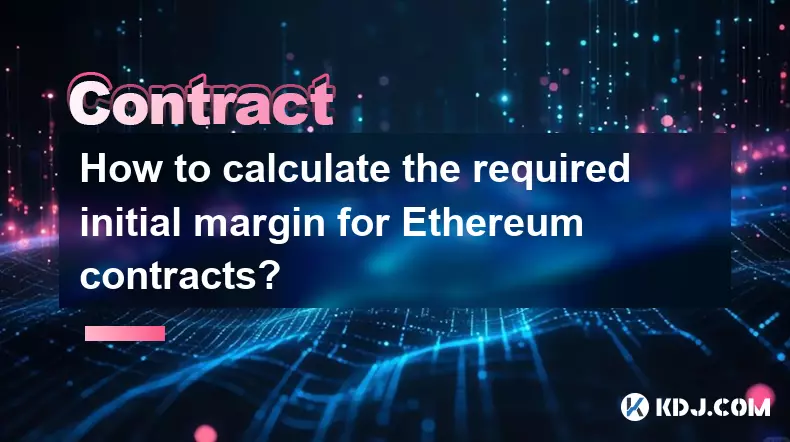
How to calculate the required initial margin for Ethereum contracts?
Oct 01,2025 at 06:01am
Understanding Initial Margin in Ethereum Futures1. The initial margin for Ethereum futures contracts represents the minimum amount of capital a trader...
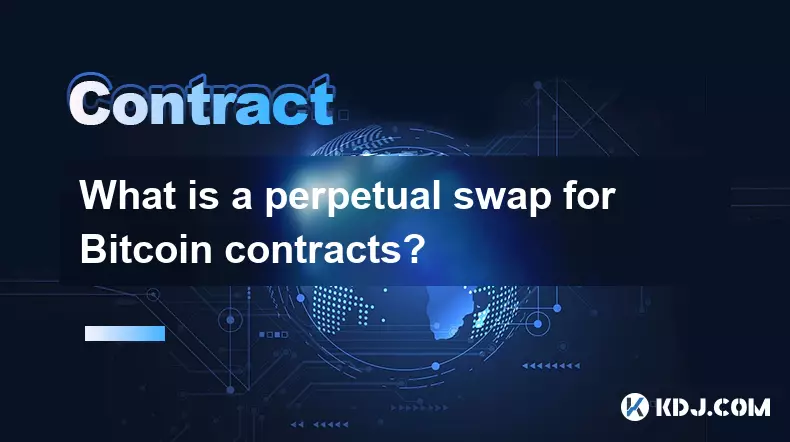
What is a perpetual swap for Bitcoin contracts?
Oct 01,2025 at 08:18am
Understanding Perpetual Swaps in Bitcoin Trading1. A perpetual swap is a type of derivative contract that allows traders to speculate on the price of ...

What is the best platform for trading SOL contracts?
Oct 01,2025 at 06:36am
Understanding the Role of Decentralized Exchanges in Modern Crypto Trading1. Decentralized exchanges (DEXs) have reshaped how traders interact with di...
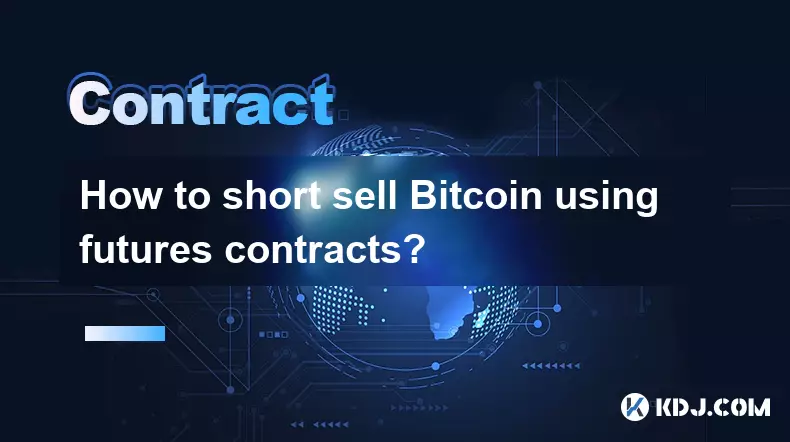
How to short sell Bitcoin using futures contracts?
Oct 01,2025 at 02:54am
Understanding the Role of Decentralized Exchanges in Crypto Trading1. Decentralized exchanges (DEXs) have become a cornerstone of the cryptocurrency e...
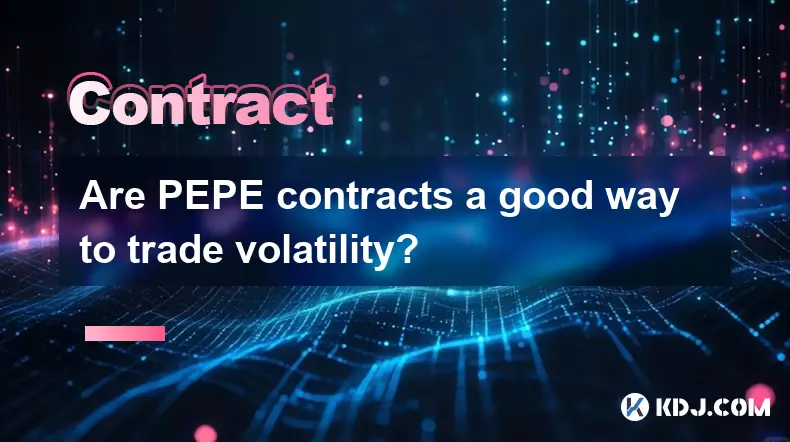
Are PEPE contracts a good way to trade volatility?
Oct 01,2025 at 04:18am
Understanding PEPE Contracts in the Cryptocurrency Market1. PEPE contracts, derived from the broader meme coin movement, have gained attention due to ...
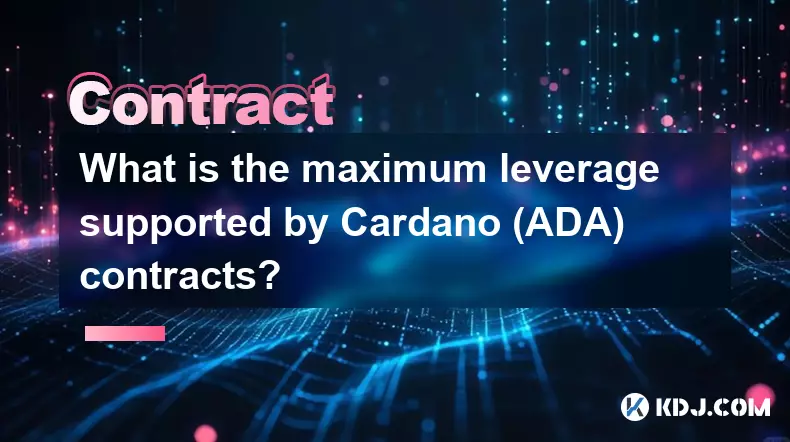
What is the maximum leverage supported by Cardano (ADA) contracts?
Sep 30,2025 at 03:37am
Understanding Leverage in ADA Derivatives Trading1. Leverage in cryptocurrency futures and perpetual contracts allows traders to control larger positi...

How to calculate the required initial margin for Ethereum contracts?
Oct 01,2025 at 06:01am
Understanding Initial Margin in Ethereum Futures1. The initial margin for Ethereum futures contracts represents the minimum amount of capital a trader...

What is a perpetual swap for Bitcoin contracts?
Oct 01,2025 at 08:18am
Understanding Perpetual Swaps in Bitcoin Trading1. A perpetual swap is a type of derivative contract that allows traders to speculate on the price of ...

What is the best platform for trading SOL contracts?
Oct 01,2025 at 06:36am
Understanding the Role of Decentralized Exchanges in Modern Crypto Trading1. Decentralized exchanges (DEXs) have reshaped how traders interact with di...

How to short sell Bitcoin using futures contracts?
Oct 01,2025 at 02:54am
Understanding the Role of Decentralized Exchanges in Crypto Trading1. Decentralized exchanges (DEXs) have become a cornerstone of the cryptocurrency e...

Are PEPE contracts a good way to trade volatility?
Oct 01,2025 at 04:18am
Understanding PEPE Contracts in the Cryptocurrency Market1. PEPE contracts, derived from the broader meme coin movement, have gained attention due to ...

What is the maximum leverage supported by Cardano (ADA) contracts?
Sep 30,2025 at 03:37am
Understanding Leverage in ADA Derivatives Trading1. Leverage in cryptocurrency futures and perpetual contracts allows traders to control larger positi...
See all articles










































































